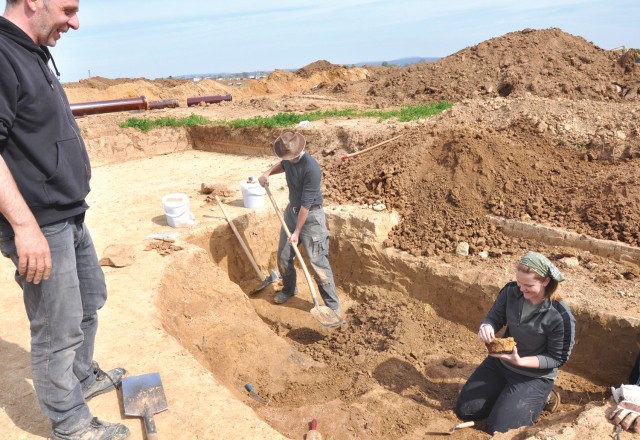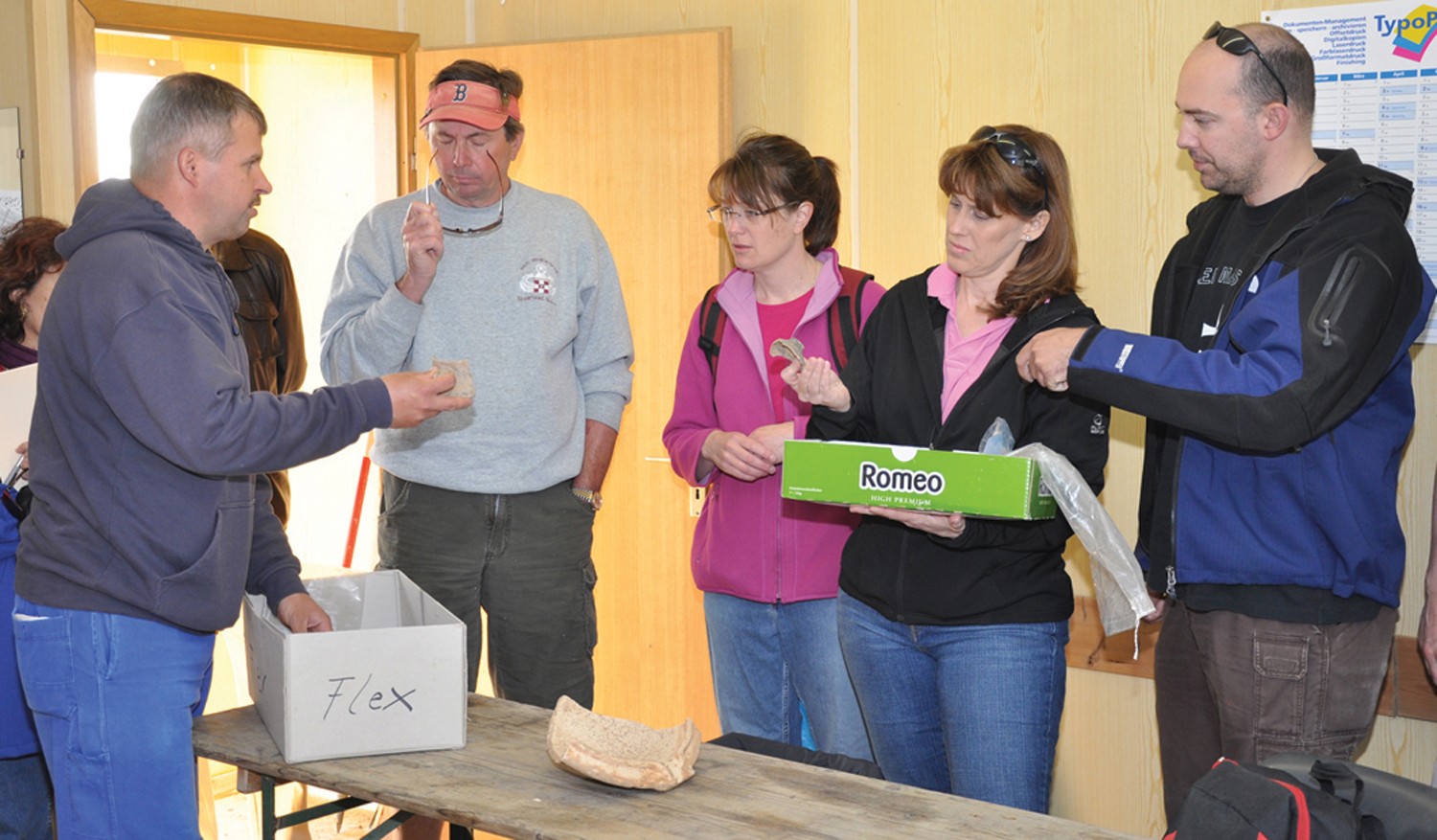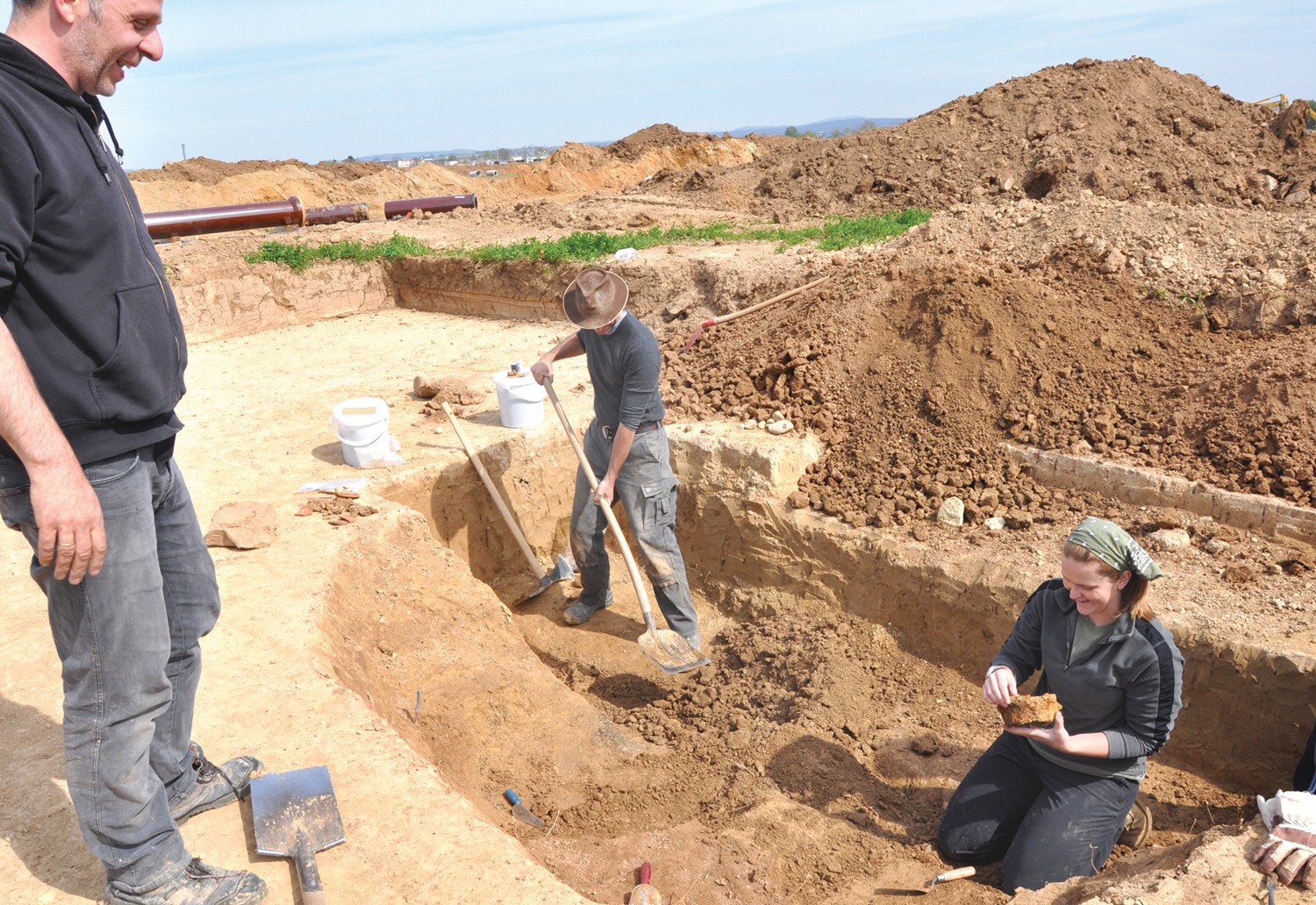WIESBADEN, Germany -- They came, they dug, and they sifted through thousands of years of European history.
A,A
With construction crews chomping at the bit to lay the foundations for a new $133 million U.S. Army housing area just outside Wiesbaden Army Airfield, time is running short for German archaeologists seeking to uncover remnants of past settlements.
After having spent several months in the fall and spring sifting through soil which revealed several Roman wells, the foundations of a villa rustica (Roman farm complex) and various artifacts, members of the Hessen archaeology team put out a call for volunteers in the U.S. community to join in the documentary project.
"We write history from what we excavate," said Claus Bergmann, excavation project leader with the Hessen Archaeology Office, while welcoming a group of U.S. military community volunteers April 19 to the dig site. He and fellow archaeologist Marcus Jae described the work up to that point, several finds including evidence of earlier Bronze and Iron Age settlements, and the expansion of the Roman Empire into the region more than 2,000 years ago.
"We have to be very careful," said Jae, explaining that with the project scheduled to wrap up in late June, archaeologists are primarily interested in documenting. "We want to preserve the sites for future archaeologists who may have better methods of uncovering the past."
A,A
Working from aerial photographs and knowing that thousands of Roman legionnaires were stationed nearby in the Taunus Mountains along the Limes boundary and in nearby Mainz and Mainz-Kastel, the archaeologists said they were glad to have the opportunity to prove their long-suspected speculation that Roman civilian settlements must have been located in the vicinity. An added benefit was the opportunity to unearth evidence of even earlier and later settlers in the area.
A,A
"This is really exciting," said volunteer Ingrid Holmer, a Head Start program teacher with the Wiesbaden Education Center. "I always wanted to be an archaeologist."
A,A
As Holmer and Mainz University archaeology student Karolin Memmenga painstakingly dug down several feet at one site, several U.S. volunteers and German university students did the same in holes several hundred feet away.
A,A
"I grew up in England and visited a lot of ruins as a kid but never got a chance to dig," said Rachel Evan, who traveled from Bamberg to volunteer at the Wiesbaden dig site. "This is a nice opportunity to get some experience."
A,A
Evan, who said she plans to eventually go back to school to work on a master's degree in anthropology, added that "it's hard work but worth it if you get just one good find."
A,A
"You never know what you'll find," added Wiesbaden volunteer Nancy Grade. "It's interesting to dig into history."
A,A
With a degree in psychology, but having considered pursuing degrees in archaeology or anthropology, Grade said that being part of a team that was discovering artifacts dating back to 3,000 B.C. was rewarding. "At the end of the day you feel like you've earned your dinner."
A,A
"I'm aching in places I thought I'd never be," said Kaiserslautern military community volunteer Leif Johnson, after having spent several days digging through the tightly packed earth.
"I've always had an amateur interest in Roman history and I guess there's a little Indiana Jones in all of us," said Johnson. "This was an opportunity too good to pass up."
Johnson added that it was extremely gratifying to help out - "but it's hard work."
"It's great being able to see some of the artifacts come out of the ground," said Wiesbaden volunteer Marty Howes. "It's back breaking and worth it.
"My hope was to see some pieces that were in whole or relatively whole condition," said Howes, explaining that as someone with several years of archaeological experience working with the University of South Carolina before coming to Europe and as a Roman history re-enactor, the dig offered an ideal opportunity to see history firsthand. Working closely with the German archaeologists was also enlightening. "They're good about answering questions; they're helpful and informative."
While the volunteers and students were outside making new discoveries, Wiesbaden volunteer Mary Freelove was in a small room carefully removing the accumulated dirt of many centuries from the bits and pieces of history. "I spent the first couple of days digging. I'm tickled to death to be in here scrubbing.
"I love history - liked it in school," said Freelove. "The thought of holding something in my hand that someone held 3,000 to 3,500 years ago - how cool is that'"
While Freelove said she "wasn't quite prepared for the sheer amount of movement of dirt by hand" before volunteering to help, "it's been great. Everyone has been super gracious. They seem to appreciate the opportunity to share not just historical aspects of the dig but learning about the community as well. It's a teaching atmosphere while we're working."
While only a limited number of volunteers can work on the site with the archaeologists at any one time, Bergmann said Americans interested in helping in the weeks before the project is wrapped up should contact Marcus Jae at civ (0160) 9353 7399 or email marcus.jae@gmx.de to find out when they might be needed.






Social Sharing